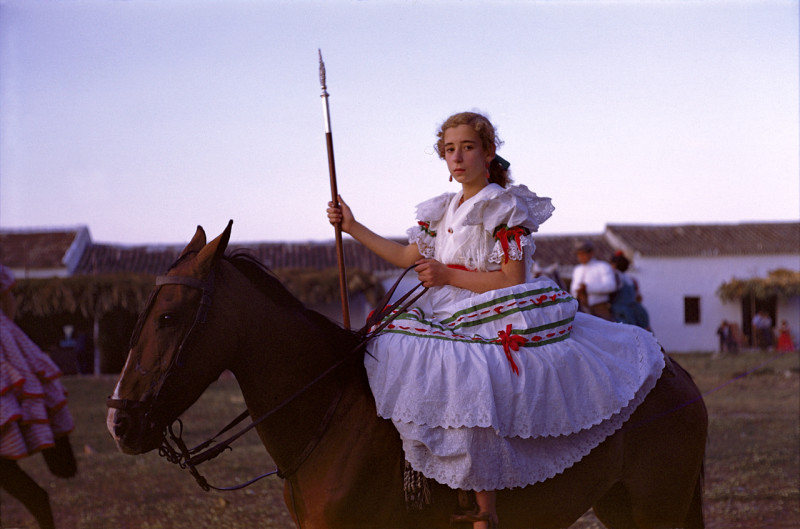Inge Morath: First Color (1953 – 1965)
[juicebox gallery_id=”37″]
Essay will play automatically, hover over image for additional options
“Rediscovering Inge Morath’s Early Color Photographs” by Mary Panzer.
The recovery of Inge Morath’s color work provides the opportunity to greatly expand our knowledge of Morath’s working techniques as a photographer. In some cases, although their original sequences have been lost, it is now possible to restore photo-essays from which the color pictures had been removed. In so doing, we gain a deeper insight into Morath’s method as we watch her decide when and where to use color film. We see when she recognized that only color could relay the message she wanted to send.
We discover photographs that use color with wit and a sure touch, in a way that only Morath could achieve. No less crucially, when we open the door to Morath’s color photographs, her work allows us to consider the color work of an entire generation. The effort to see Morath’s work in its original context, on the pages of magazines such as Holiday, LIFE, and Paris March, leads us to discover how much color photography was published in the decades following World War II, even by those who insisted that they never worked in color, or never did so willingly – including all those who worked for Magnum Photos – during the 1950s and ’60s. Surely Inge Morath would have enjoyed the irony of this process. The work to which she leads us has always been there, hiding in plain sight, obscured by the acceptance of rules made long ago by men and women who never followed them in the first place. The work that Inge Morath kept, but never exhibited, now opens the door to a new kind of history, within which she shines.
© Mary Panzer, 2009.
Excerpted from “The Complete Story – Black and White, and Color: Rediscovering Inge Morath’s Early Color Photographs,” in Inge Morath: First Color, Göttingen: Steidl, 2009.
Read the Afterword by John Jacob

